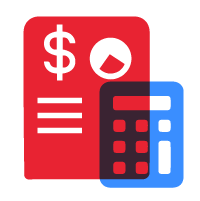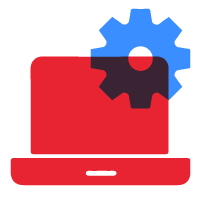In the realm of machine learning and artificial intelligence, the process of annotating data plays a crucial role in transforming raw information into meaningful insights. By enriching raw data with meaningful labels and tags, annotations equip algorithms to unravel patterns, predict outcomes, and make informed decisions. From images to text and beyond, data annotation serves as a bridge between human understanding and computational analysis, paving the way for the development of accurate and effective AI models.
In this blog, we’ll detail the steps on how to annotate data, how to both quantify and qualify them, and data annotation outsourcing as a viable business option for you. Read on to know more.
What Does a Data Annotator Do?
A data annotator assumes the crucial role of meticulously labeling and annotating diverse datasets, transforming raw data into structured information that machine learning models can learn from. They follow prescribed annotation guidelines, which vary depending on the specific task, domain, and data type. Whether annotating images, text, audio, or videos, data annotators apply labels, draw bounding boxes, segment objects, tag entities, or perform other annotation actions to highlight pertinent features within the data.
By adhering to these guidelines, annotators ensure the accuracy and consistency of annotations, thereby establishing a dependable foundation for training machine learning models. Their work encompasses not only creating annotations but also rectifying any discrepancies, cross-referencing with guidelines, and adhering to quality assurance protocols to deliver datasets of high integrity.
Additionally, data annotators often collaborate with peers to harmonize annotations and provide feedback on the guidelines or challenges encountered during annotation. As this role involves interpreting complex data and adhering to evolving industry trends, data annotators need to be agile learners, adaptable to different domains, and committed to maintaining data privacy and ethical standards. Ultimately, data annotators form an essential bridge between raw data and the AI models that learn from them, facilitating the advancement of machine learning applications across a multitude of fields.

How to Annotate Data in Machine Learning
Data annotation in machine learning is the foundational process of labeling raw data to facilitate model training. Whether it’s assigning categories to text, highlighting objects in images, or tagging audio samples, annotations provide context and meaning to the data.
Annotators follow predefined guidelines to accurately label the data, enabling machine learning algorithms to learn patterns and make informed predictions. Balancing annotation quality and quantity is vital for developing effective models that can generalize well. Through this process, raw data transforms into valuable training sets, paving the way for AI systems to comprehend and respond to diverse real-world scenarios.
How to Create an Annotation Set
Creating an annotation set is a foundational step in building effective machine learning models. It involves preparing a collection of data that needs to be labeled or annotated according to your specific machine learning task. Ensuring high-quality annotations and proper representation of the task’s complexity are crucial for achieving good model performance.
Here’s a step-by-step guide on how to create an annotation set:
1. Define your task.
Will you require object detection, image segmentation, text classification, or sentiment analysis? Clearly define the task you want to solve using machine learning.
2. Collect data.
Gather a diverse and representative set of data relevant to your task. This data will serve as the basis for creating your annotation set.
3. Prepare all collected data.
Clean and preprocess the collected data. This might involve removing duplicates, handling missing values, and standardizing data formats.
4. Create annotation guidelines.
Develop detailed annotation guidelines that describe how annotators should label the data. Include instructions for different scenarios, edge cases, and any special considerations.
5. Select appropriate annotation tools.
Choose appropriate annotation tools based on your data type and annotation needs. There are various tools available for different tasks, such as Labelbox, Supervisely, Prodigy, and more.
6. Recruit annotators.
If you’re not annotating the data yourself, hire annotators. Look for individuals who understand your guidelines and the task’s nuances. Provide them with training on the annotation process, as well as the guidelines you have in place. This might involve drawing bounding boxes, segmenting images, or labeling texts, depending on your task.
7. Implement a quality control process.
Implement a quality control process. Have a subset of annotated data reviewed by experts or perform internal validation to ensure the annotations are accurate and consistent.
8. Use a validation set.
Set aside a portion of the annotated data as a validation set. This set is used during model training to tune hyper parameters and assess the model’s performance.
9. Reserve a portion of the data as test set.
Reserve another portion of the annotated data as a test set. This set is used to evaluate the final trained model’s performance and generalization.
10. Train your machine learning model.
Use the annotated data to train your machine learning model. The annotations serve as the ground truth that the model learns from.

How to Annotate Data Using Tools
Annotating data using specialized annotation tools is a systematic process that involves preparing, labeling, and organizing data for machine learning tasks. After selecting an appropriate tool based on the data type and annotation needs, one should become familiar with its interface and features. The data is imported into the tool, and annotation types, such as bounding boxes or labels, are defined according to the task’s requirements. Annotations are then applied to the data, following predefined guidelines.
Regular saving of annotations is crucial to prevent data loss. Collaboration features can facilitate teamwork, and validation stages help maintain annotation quality. Once completed, annotations are exported in compatible formats for model training. Iterative refinement and quality control ensure accurate and consistent annotations, ultimately contributing to the success of machine learning models.
Related Article:
How to Annotate Data: Quality vs. Quantity
Annotating data involves a balance between quality and quantity, both of which are essential for training effective machine learning models. Here’s how to approach the trade-off between quality and quantity when annotating data:
Quality
- Clear Guidelines: Prioritize creating precise and detailed annotation guidelines. Clear instructions help annotators understand the task and produce accurate annotations.
- Expert Annotators: If feasible, involve expert annotators who are well-versed in the domain and who understand the intricacies of the task. Their expertise can result in higher-quality annotations.
- Validation: Implement a validation step where a subset of annotated data is reviewed by experienced annotators or domain experts. This helps identify and correct annotation errors or inconsistencies.
- Iterative Process: Embrace an iterative approach, revisiting annotations as your understanding of the task evolves. Regularly refine guidelines based on insights gained during model training and evaluation.
Quantity
- Diverse Data: A larger quantity of diverse annotated data improves model generalization. Aim for data that captures various scenarios and edge cases relevant to the task.
- Data Augmentation: If you have limited annotated data, leverage data augmentation techniques to artificially increase the dataset’s size and diversity. This enhances model robustness.
- Balanced Tradeoff: Strive for an optimal balance between quality and quantity. While more data is valuable, ensuring annotations are accurate and consistent is equally crucial.
Considerations
- Scalability: Depending on the project’s scale, consider the resources required for annotating large quantities of data with high quality. You might need a larger annotation team or specialized tools.
- Task Complexity: For tasks where subjective interpretation is involved, like sentiment analysis or medical diagnosis, prioritize quality to avoid misleading annotations.
- Time Constraints: If you have limited time, focus on ensuring the quality of a smaller dataset. Gradually increase the dataset size as more resources become available.
- Realistic Goals: Set realistic expectations for both quality and quantity. Striving for a balance avoids compromising model performance due to incomplete or inaccurate annotations.
Should You Outsource or Annotate In-House?
Deciding whether to outsource data annotation or handle it in-house depends on various factors related to your project’s scope, resources, expertise, and specific requirements. Here’s a comparison to help you make an informed decision:
Outsourcing
Cost-Effectiveness
Outsourcing can be cost-effective, especially if you lack the resources to hire and train a full in-house annotation team.
Scalability
Outsourcing allows you to quickly scale up or down based on your project’s demands. You can access a larger pool of annotators without the need for extensive recruitment.
Expertise
If you lack expertise in data annotation, outsourcing to a specialized company can ensure high-quality annotations. Established annotation providers often have experienced annotators and QA processes.
Faster Turnaround
Professional annotation services can complete large volumes of annotations quickly, which is particularly useful for tight project deadlines.
Focus on Core Competencies
Outsourcing frees up your team’s time to focus on core aspects of your project, such as model development, research, and analysis.
In-House
Data Sensitivity
If your data is sensitive or confidential, keeping annotation in-house offers more control over data security and privacy.
Domain Knowledge
In-house annotators can better understand complex domain-specific nuances, leading to more accurate annotations.
Long-Term Projects
For projects with ongoing annotation needs, building an in-house team can be more cost-effective over time, as you avoid ongoing outsourcing costs.
Customization
You have greater control over the annotation process, guidelines, and workflows when managing it in-house. This can lead to annotations tailored to your specific needs.
Feedback Loop
In-house annotators can provide direct feedback to model developers, enhancing the iterative model improvement process.

Boost Your ML and AI Projects with Outsource-Philippines’ Data Annotation Services
Are you a pioneering company in the dynamic fields of machine learning and AI, seeking to harness the full potential of your data? You’ve come to the right place! Our team of experienced annotators is dedicated to ensuring your data is accurately and comprehensively labeled, enabling your models to excel in accuracy and performance. With a proven track record of transforming raw data into valuable insights, we pride ourselves on meticulous quality control and efficient turnaround times.
Let us be your trusted ally in crafting impeccable training datasets that lay the foundation for groundbreaking AI solutions. Contact us today and take your AI endeavors to new heights!











